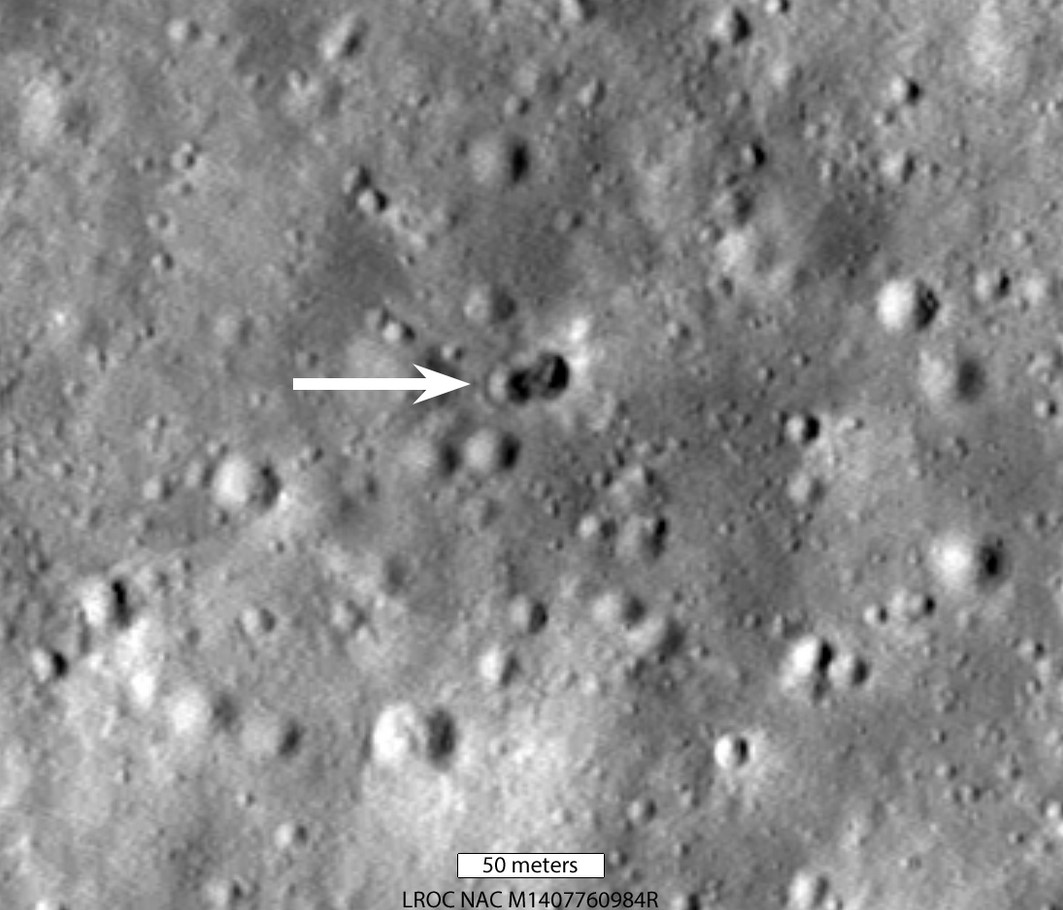Last year, astronomers warned that a large piece of debris was on a collision course with the Moon. Initially, they speculated that it was a SpaceX booster but later zeroed in on a Chinese Long March 3C rocket booster that launched the Chang’e 5 mission. When it did impact on March 4, 2022, astronomers noted a strange double crater.
A new paper suggests that it couldn’t have been a single object breaking up since there’s no atmosphere on the Moon. Instead, the booster must have been carrying an additional, undisclosed payload.
The object was originally discovered on March 14, 2015 with the Catalina Sky Survey. At first, it was thought to be a near-Earth asteroid and was provisionally named WE0913A. However, further study of the object’s orbit revealed it was in a geocentric orbit rather than heliocentric, suggesting it could be space junk.
Additional observations showed that the object had a lunar flyby on February 13, 2015. Working backwards, astronomers thought that since NASA had launched the Deep Space Climate Observatory (DSCOVR) spacecraft on a Falcon 9 rocket on February 11, 2015, WE0913A was initially thought to be the Falcon 9 rocket body. Astronomers continued to monitor this object and in late 2021 it became apparent that the object would impact the Moon by March 2022.
Still further observations and study of the object when it made several Earth flybys, however, revealed it likely was NOT the Falcon 9 booster and that instead, its orbit and timeline coincided with the launch of the Chinese Chang’e 5-T1 mission to the Moon on October 23, 2014.
“This led us to believe that the object that would impact the Moon on 2022 March 4 was likely the Long March 3C [rocket body] from the Chang’e 5-T1 mission,” wrote Tanner Campbell, Adam Battle, Bill Gray and several other astronomers who had been analyzing data on this object. “Adding to the confusion, after this realization, the Chinese Ministry of Foreign Affairs issued a press release on 2022 February 21 saying that the object impacting the Moon was not the Long March 3C upper stage from the Change 5 mission.”
But in the new paper by Campbell et al, they said that their trajectory and spectroscopic analysis of the object from ground-based telescope observations during several Earth flybys shows conclusively that WE0913A is the Long March 3C rocket body from the Chang’e 5-T1 mission.

But there’s another mystery in this crazy space debris story. Using Campbell and team’s predicted impact location, NASA’s Lunar Reconnaissance Orbiter was able to image the crater site approximately 7.5 km from the prediction. Surprisingly, the crater was actually two craters, an eastern crater (18-meter diameter, about 19.5 yards) superimposed on a western crater (16-meter diameter, about 17.5 yards).
The double crater was unexpected and lunar impact experts said the twin craters indicated that the rocket body must have had another payload as part of the booster.
“Typically, a spent rocket has mass concentrated at the motor end; the rest of the rocket stage mainly consists of an empty fuel tank,” wrote Mark Robinson, principal investigator with the Lunar Reconnaissance Orbiter Camera, back in June of 2022 when the LRO images were released. “Since the origin of the rocket body remains uncertain, the double nature of the crater may indicate its identity.”

Robinson also pointed out that no other rocket body impacts on the Moon created double craters, and offered images of craters from four Saturn rocket boosters from Apollos 13, 14, 15, 17.
“The results from the Bayesian analysis imply that there may have been additional mass on the front of the rocket body,” Campbell and team wrote. “Comparing the pre- and post-impact images of the location shows two distinct craters side by side that were made by the Chang’e 5-T1 R/B. The double crater supports the hypothesis that there was additional mass at the front end of the rocket body, opposite the engines, in excess of the published mass of the secondary permanently affixed payload.”
The researchers noted that Chinese foreign ministry officials denied that the space junk is from their rocket, insisting that the Chang’e 5 rocket already burned up on its return trip to Earth in 2014. However, on March 1, 2022, the U.S. Department of Defense’s Space Command, which tracks low-Earth orbit space junk, released a statement saying that China’s 2014 rocket never deorbited. Additionally, Chinese officials have never commented on the nature of the double crater.
While the origins of the rocket don’t really matter — it was going to impact the Moon no matter who launched it — many have said that the confusion surrounding the object’s identity highlights the need for space agencies and private launch companies to develop better procedures for tracking their rockets. This would keep such objects from being mistaken for Earth-threatening asteroids. It is also hoped that confusion like this — and subsequent denials of responsibility — would prompt space agencies and launch providers to readily disclose the number of payloads on board.

